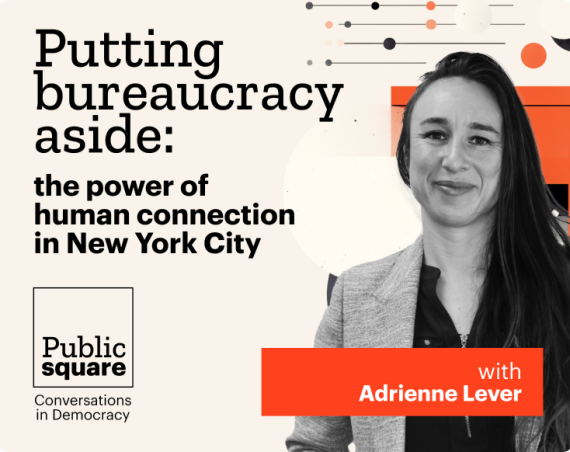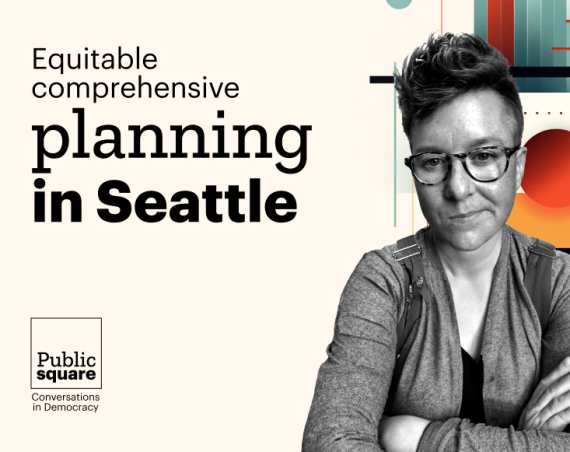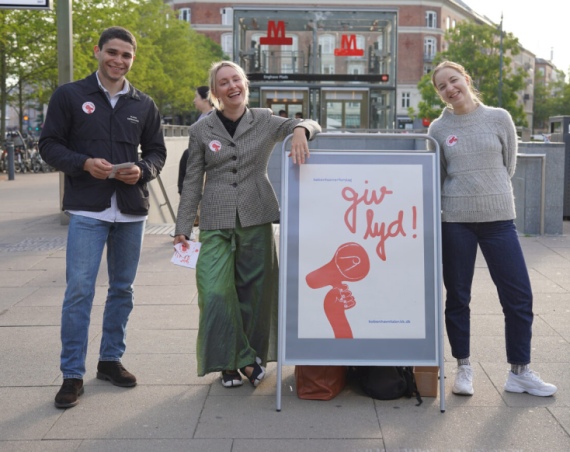In the aftermath of a polarising debate, public servants are expected to put the pieces of the puzzle back together. But how do you bridge this divide and inspire your community to move forward together? The answer could lie in citizen participation.
Multiple parties, differing political beliefs, and constructive debate are the lifeblood of our democratic system. And it’s safe to say that elections, referendums, and social conversations are positive traits of a multi-faceted, balanced society in progress. We can’t always agree on everything, nor should we. Besides, skepticism and mistrust can be quite fruitful in political settings.
However, in the last couple of years, democratic societies have witnessed a dramatic surge in polarisation. Debates on world-scale or controversial topics, such as Brexit or climate change, have left communities deeply divided. And while debate can be constructive and necessary, this division has the potential to harm the sense of trust among different community agents, which in turn impedes those communities from moving forward as a whole.
How can communities rebuild trust in the wake of a polarised debate? We believe that the answer lies, at least partly, in citizen participation. And we’re not alone: involving citizens was repeatedly recognized as a solution to dissatisfaction with democracy during the Innovation in Local Democracy event [Read our recap here]. Let’s take a look at these 5 different ways in which citizen participation can bring trust and unity.
1. A local approach, a direct impact ?
Polarising debates often concern big and ideological policy questions. Yet, within local governance, policy areas often concern tangible, and practical topics, which have a direct impact on the everyday lives of citizens. Therefore, citizen participation on a local level is the perfect gateway to rebuilding trust. Does the city need more green spaces or playgrounds? New or improved policies on available, affordable housing? Measures to make traffic safer for cyclists and pedestrians? It’s simply much easier to agree on small-scale topics, like the renovation of the town square, compared to world-scale and partisan issues that bring division and debate. These close-to-home-questions will bring your community a breath of fresh air and provide an opportunity for common ground.
When you act upon the input you get from your citizens, e.g. by renewing the park, the community witnesses the impact of their engagement firsthand. The results of their participation efforts can be felt and seen in the places where they work and live, and directly influence their quality of life and general wellbeing. Allowing citizens to directly influence their environment strengthens the bond between the community and the local council.
At its core, it’s all about impact, and about making that impact as visible and tangible as possible. The act of citizen participation and deliberation with peers is in itself a process that builds trust, but to make that trust sustainable, it’s important to measure the impact of your project and make tweaks if necessary.
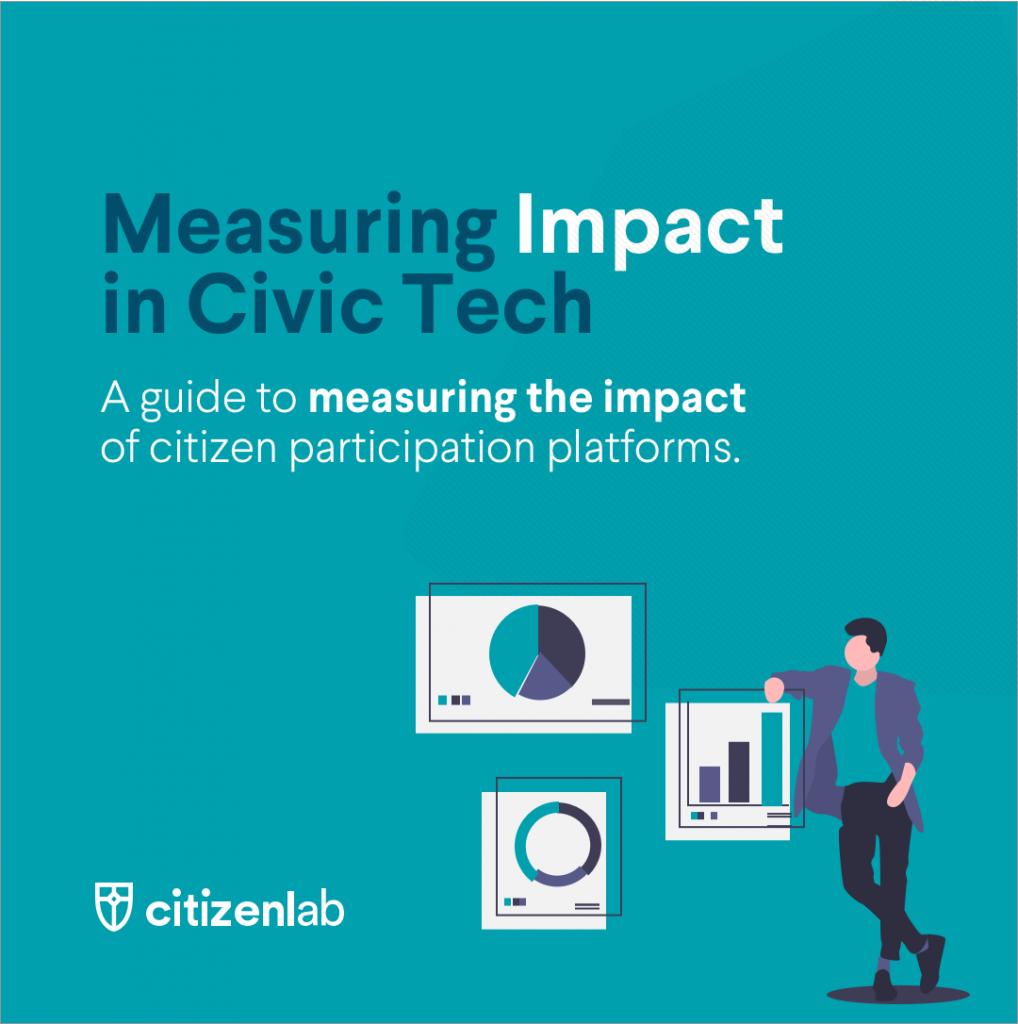
Measuring the impact of a citizen participation project is not self-evident, but it’s essential: it helps you to adjust your strategies, improve tools and, above all, demonstrate the benefits of citizen participation in general. What should you keep in mind?
- Define a clear vision of success.
Impact is a subjective concept, and it is important to remain realistic about the outcomes your platform will and can have. A few clear-cut goals will help you more than a lot of broad objectives. - While collecting data from your citizens, only ask for what you need. Collecting too much data isn’t only ethically questionable, it can also lead to higher drop-off rates and more work in processing all the information.
- Look beyond the numbers. Citizen participation has proven to result in more support for policy decisions, and high numbers do not necessarily mean high impact. This is especially true for trust, which has to be built over time.
2. Clear & transparent communication ?️
The entire policy cycle can be rather complicated and it’s not always easy to offer your community clear updates along the way. Citizen participation projects offer a perfect opportunity to set clear expectations of the information that will be communicated and when that will happen.
Many online participation platforms, therefore, work with a project timeline. This timeline, which is set by the local government, provides a clear overview of the projects and sets realistic expectations for the community. What’s the deadline for citizens to participate? How will the input be evaluated? When will the results be shared? Being transparent about this process and meeting these deadlines will assist in rebuilding the trust between the local council and your citizens.
If you define the scope of a participation project, it’s easier to inform citizens if their suggestions don’t match the project. Even if an idea falls within the scope but is not in line with your policy ambitions or not feasible in terms of budget, it’s best to communicate this openly. If your project is hosted on an online platform, you can directly reply and explain why the idea will not
When communicating to your citizens, it’s a good idea to keep the 3 following principles in mind:
- Clarity. When communicating with your citizens, opt for creative, short and precise sentences. Make it easy to understand for them what the value is of your interaction, and pick a clear call to action.
- Diversity. Using different channels and platforms helps you to raise awareness and reach diverse audiences. See point 3 for more on this topic.
- Continuity. Communicate with your citizens on a regular basis, and keep them updated on what’s happening.
3. Inclusion of the entire community ?
The feeling of trust is inextricably linked with the feeling of being heard, understood and represented. The lack of trust can thus be solved by including those groups that potentially feel underrepresented in your local council.
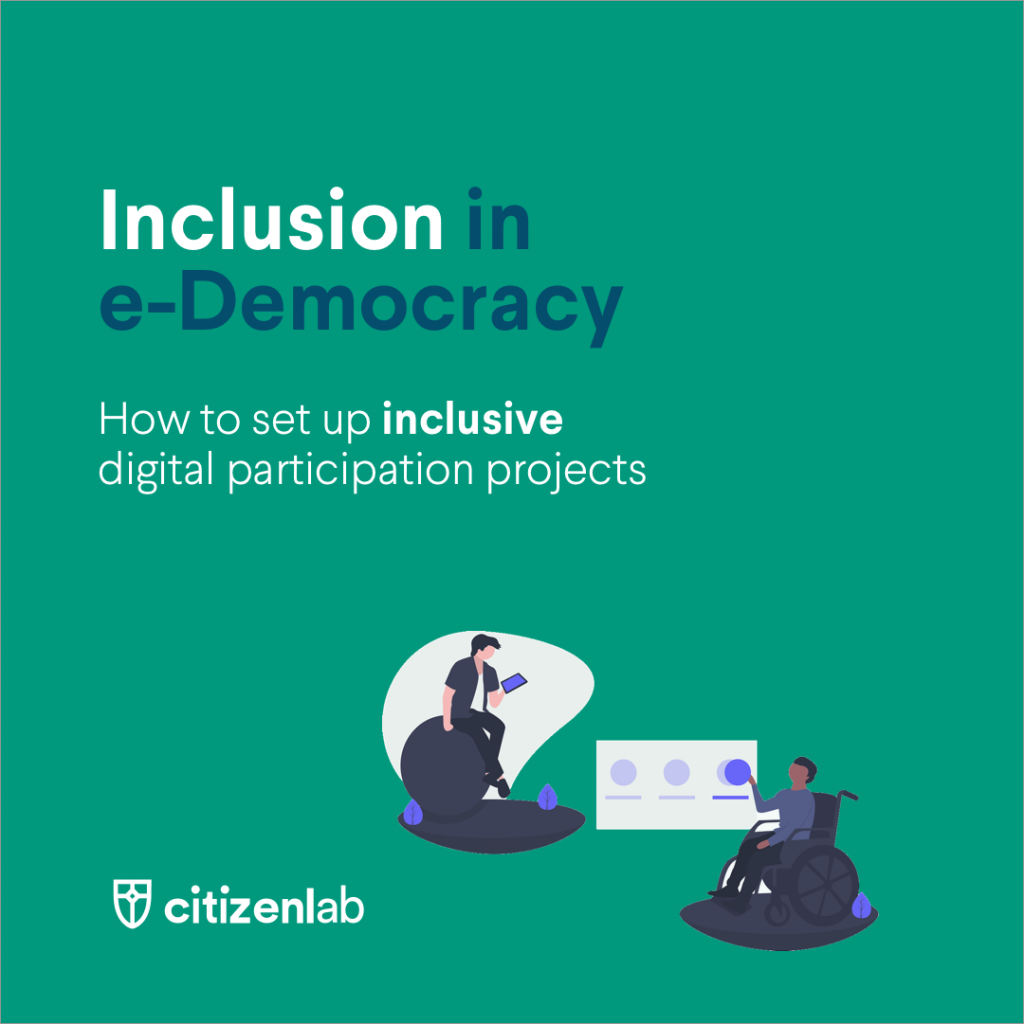
When more people and groups have access to recurring participation initiatives, your projects’ audience will automatically become more diverse and inclusive. To make an extra effort to ensure that your project is inclusive, it pays to keep the following things in mind:
- Neutral and inclusive communication. If your community is bi- or multilingual, make sure your communication is readily available in both or all spoken languages. While communicating about your project, use neutral language that is free of assumptions or stereotypes. This counts for your visual communication as well: make sure it represents citizens of all genders, ages, and backgrounds.
- Online participation efforts will generally help you to reach a wider audience than offline touchpoints, but mixing online and offline participation strategies will help you to win participation gold. Combining a digital platform with offline posters, postcards or flyers will help you to get your message across both to those who live on their phones and those who cherish the analogue.
- Think about the UX of your platform. It should be simple, straightforward, and compatible with all kinds of devices. To be truly inclusive, make sure the software caters to citizens with visual impairments.
- Never assume that your efforts are paying off. Measure your results, evaluate the diversity of your participating sample of citizens, and adjust course if necessary.
If you have a hard time reaching a diverse audience, think of possible partners you can reach out to, e.g. religious institutions, cultural institutions or local businesses that may engage with the community on a weekly basis. All these tips, of course, only scratch the surface of what it takes to make a participation project truly inclusive. For more information on this topic, consult our free guide.
4. Participation in your pocket ?
For a long time, participation outside of election times meant cancelling plans, clearing schedules and attending meetings in the town hall. Needless to say, this was a tangible threshold for a lot of people. Besides, citizens who didn’t feel particularly affiliated with or represented by their administration were not likely to accept the city’s invitations.
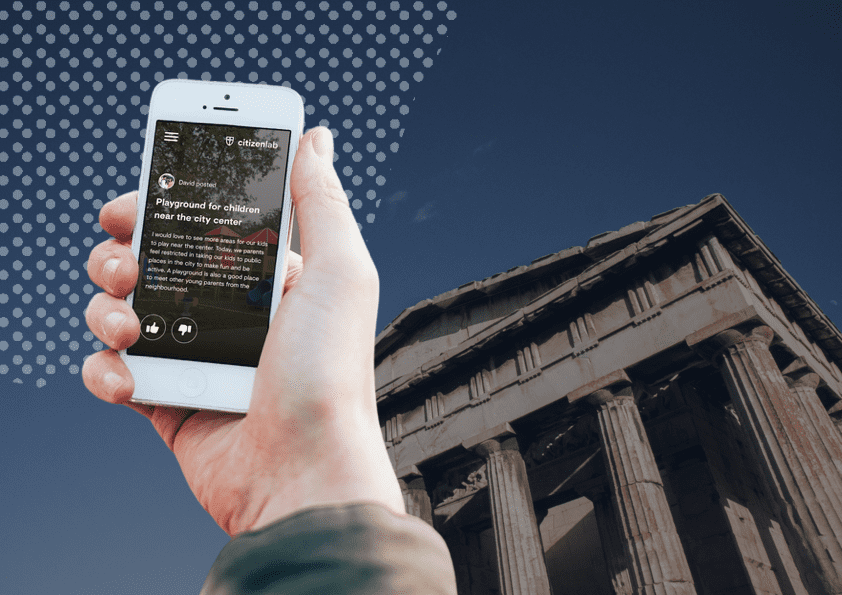
Bringing the town hall meeting to the online realm largely eliminates these obstacles and makes it easier than ever for citizens to raise their voices. The younger generation is inherently more digitally inclined, but even for working people, young parents, or other groups with busy lives or other concerns, the digitalisation of citizen participation has made a world of difference.
Online participation doesn’t only have the potential to reach more people, it also allows them to participate more often. A participation platform is built to host multiple projects at once and offers many different participation methods, so citizens can raise their voice on different topics and various projects at a time. They can allocate budgets for the renovation of the town square while simultaneously sharing ideas on improving mobility or voting in favour of green spaces. Giving the community the opportunity to get involved in different policy areas and at different stages of the policy cycle can contribute to your local council in re-building trust.
5. We, the people: stimulate bottom-up change ?
As we’ve stated before, allowing citizens to participate in local policy is a great way to build trust. It ensures that people feel represented and valued by their administration and allows for debate and alignment with peers. So while an administration-led platform is a great start, it could pay to take it one step further with citizen proposals.
Put simply, citizen initiatives are grassroots initiatives that are led by citizens. It entails that citizens can, at any time, write down their proposals and gather support for their initiative. This initiative must reach a predefined threshold to gain a spot on the municipal agenda.
While orchestrating citizen proposals at a national level can be complex, there lies a lot of potential here for citizen proposals at a local level. In the last few years, local initiatives have popped up in cities across the UK. As early as 1998, 2 pioneering citizens in Cwmllynfell, Wales took matters in their own hands to found a community energy charity. In Edinburgh, Scotland, citizens have raised their voices about tourism, gentrification and the privatisation of public space, among other things. And the UK’s neighbours in Dublin, Ireland launched a citizen initiative to protect a David Attenborough mural from removal.
Citizen proposals are not only a great way for citizens to steer local policy and actively co-create their communities, but it also requires them to work together and gather support for their ideas. Raising awareness, campaigning and collecting signatures is a great way for citizens to connect, work towards a common goal and build mutual trust. Administrations that allow citizen proposals on their (online) platforms empower their citizens and showcase trust, while still staying in control. After all, cities set the rules on when a
If you’re part of an administration and you’re considering to get started with citizen proposals, here are some questions you could ask yourself:
- How many votes/signatures should a proposal collect to be considered? (Usually, this is expressed in a certain % of the population).
- How much time do your citizens have to gather that support?
- What are the other criteria for a proposal to be considered? (for example non-discriminatory, under a certain budget, etc.)
- What role will the city play? Is it a matter of granting permission or of true co-creation?
- Once a proposal has checked all the necessary boxes, what are the next steps?
Ready to launch citizen participation??
A visible impact, a strong social fabric, an easily accessible participation method and a bottom-up wind of change are all factors that will rebuild trust in polarised communities. An online platform offers the possibility to launch a multitude of participation projects and to work with different participation methods.
Curious to see what citizen participation could look like in your municipality? CitizenLab has supported more than 125 local governments with their citizen participation projects. Our experts are happy to show you around the digital platform and guide you through the possibilities!?


